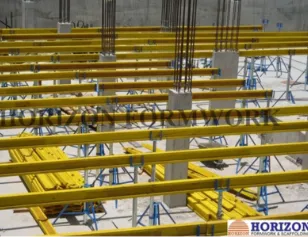டிசம்பர் . 12, 2024 14:49 Back to list
Exploring Formwork Systems
In modern construction, formwork systems play a critical role in shaping and supporting concrete structures until they reach the desired strength. Among the various options available, formwork systems, metal formwork, and steel formwork stand out for their durability, reusability, and efficiency. This article delves into these formwork types, highlighting their features, advantages, and suitability for various projects.

What is a Formwork System?
A formwork system is a temporary structure used in construction to mold and hold wet concrete in place until it sets and achieves sufficient strength. These systems are essential in constructing slabs, walls, beams, and other concrete components.
Types of Formwork Systems
Formwork systems can be categorized into various types based on the material used:
- Timber Formwork: Lightweight and easy to use, but less durable.
- Metal Formwork: Durable and cost-effective over time.
- Plastic Formwork: Suitable for repetitive projects.
- Steel Formwork: Ideal for heavy-duty applications due to its strength and longevity.
Advantages of Formwork Systems
- Efficiency: Speeds up the construction process by providing a reliable framework.
- Flexibility: Available in modular designs for diverse construction needs.
- Safety: Ensures the structural integrity of the concrete during curing.
Benefits of Using Metal Formwork
Metal formwork is a popular choice in modern construction due to its superior strength and reusability compared to traditional timber formwork.
Key Features
- Durability: Resistant to wear and tear, making it suitable for repeated use.
- Precision: Ensures accurate dimensions and smooth finishes.
- Cost-Effectiveness: Although the initial cost is higher, its long lifespan makes it economical in the long run.
Applications
Metal formwork is widely used in constructing:
- Multi-story buildings.
- Bridges and infrastructure projects.
- Architectural structures requiring detailed finishes.
Why Choose Metal Formwork?
- Environmental Impact: Reusable nature reduces waste, making it eco-friendly.
- Adaptability: Customizable to fit complex structural designs.
Strength and Reliability of Steel Formwork
Steel formwork is a subset of metal formwork, designed for heavy-duty applications and demanding construction projects.
Characteristics of Steel Formwork
- High Load-Bearing Capacity: Supports large volumes of concrete.
- Corrosion Resistance: Can be treated for enhanced longevity.
- Smooth Surfaces: Provides an excellent finish to concrete structures.
நன்மைகள்
- Strength: Superior to other materials, making it ideal for large-scale projects.
- Minimal Maintenance: Requires less upkeep compared to timber.
- Time-Saving: Pre-fabricated panels accelerate the construction process.
Common Uses
Steel formwork is indispensable in projects such as:
- Skyscrapers and industrial buildings.
- Dams and tunnels.
- Heavy foundations and retaining walls.
Comparing Formwork System, Metal Formwork, and Steel Formwork
|
Feature |
Formwork System |
Metal Formwork |
Steel Formwork |
|
Material |
Timber, metal, plastic |
Aluminum, steel |
Steel |
|
Durability |
Varies by type |
High |
Very High |
|
Reusability |
Moderate to high |
High |
Very High |
|
Cost |
Low to moderate upfront |
Moderate upfront |
High upfront, low per use |
|
விண்ணப்பம் |
General construction |
Medium to large projects |
Heavy-duty applications |
Choosing the Right Formwork
When selecting a formwork system, consider the following factors:
- Project Size and Complexity: For intricate or large-scale projects, steel formworkis recommended.
- Budget: Metal formworkoffers a balance between cost and durability.
- Reusability: Opt for systems with a high reuse rate to reduce long-term expenses.
A reliable formwork system is integral to efficient and safe construction. Whether it's the versatility of general formwork systems, the precision of metal formwork, or the robustness of steel formwork, each option has its unique benefits. By understanding the applications and advantages of these systems, contractors and builders can make informed decisions to enhance project outcomes.
-
Timber Beam H20 for Agricultural Buildings
செய்திJul.21,2025
-
Tie Rod Concrete Formwork for Bridge Construction
செய்திJul.21,2025
-
Table Formwork for Slab Edge Protection
செய்திJul.21,2025
-
Load Calculations for Wall Formwork System
செய்திJul.21,2025
-
Concrete Column Form Work Systems Productivity Tips
செய்திJul.21,2025
-
Beam Slab Formwork for Ribbed Slabs
செய்திJul.21,2025